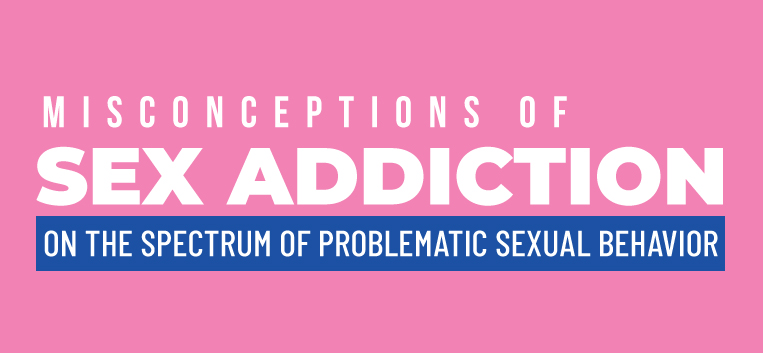Problematic sexual behavior is an ongoing, uncontrollable pattern of sexual thoughts and behaviors that prove problematic in a person’s life. This particular form of addiction or compulsive behavior is often misunderstood. Sensationalized or worst-case scenarios may make headlines – but are not the norm. Though “sex addiction” may be the more known name, there is a spectrum of clinical issues; to more accurately include everything under the umbrella, the term problematic sexual behavior (PSB) is used. If unaddressed, PSB can progressively get worse over time. Sexual behavior is so ingrained with who we are as human beings,” says Avery Rowles, MA, LPC, CSAT. Avery considers it a privilege to walk alongside clients struggling with PSB. “If something is awry then we get to be part of their integration back to humanity. You get the essence of who the person is if they allow you in there. It is a beautiful thing to witness when somebody comes back to themselves. It is not about the sex but about where their soul went amiss.” When is it a problem? “Sexual behavior can become problematic based on factors such as pathology, co-occurring disorders, relationship conflicts, values conflicts, and health issues,” says Richard Blankenship, LPC, NCC, CPCS, CBTS, CPSBT. “It doesn’t have to be pathological or have a diagnosis to be problematic.” Blankenship serves on the board of directors for the Society for the Advancement of Sexual Health. Signs that sexual behavior is becoming problematic include:
- Preoccupation to the point of obsession for hours, even days.
- Loss of control over sexual urges, thoughts or behaviors.
- Negative consequences like problems at work and relationships or emotional decline.
The addiction is not about sex, but about escaping some form of emotional discomfort. The behaviors are an attempt to self-medicate, become numb to escape problems or avoid intimacy. PSB’s consequences (shame, guilt, broken relationships) can provoke increased behaviors. Shame surrounded behavior A great amount of shame comes along with this behavior, just like other forms of addiction or compulsive behavior. “Many of our clients have extreme shame surrounding their problematic sexual behavior,” says Dr. Jason Doorish, LPC-S, CSAT. “Our job is to aid them in reducing their shame-driven behaviors and to help them construct a healthy sexuality plan. We help them develop behaviors that are aligned with their core values for long-term recovery success that is free of compulsive behaviors or mind-altering substances.” Misunderstood by many People diagnosed with this behavior do struggle with controlling sexual impulses, but problematic sexual behavior does not equate to a sexual offense. Though it is possible to be both PSB-diagnosed and a sexual offender, most people with PSB do not become sexual offenders. “Some sexual behaviors that might have been called an addiction or problematic may not be a problem to the individual,” says Blankenship. “Even DSM diagnosis can’t be rendered if it’s not causing a problem for the individual. People who are caught up in PSB don’t realize the impact it has on others in their environment until it’s too late.” It is a misconception to think someone with PSB cannot get better. Treatment will need to be specialized, however. Treating PSB differs from treating other types of compulsive behaviors or addictions in that the goal is not to completely give up sex. For someone who struggles with alcoholism, the treatment can involve cutting out alcohol entirely. With PSB the goal is to change the clients’ relationship with sex, not to completely abstain. Next Step Toward Recovery Santé Center for Healing offers treatment for those suffering anywhere on the problematic sexual behavior spectrum, including sex addiction. Given that many people with PSB also misuse alcohol and other drugs, Santé is expertly prepared to address the co-occurring disorders simultaneously for a great chance at achieving and maintaining long-term recovery. You can reach Santé at 866.238.3154 to talk about specialized treatment options today. Article by Heather Willis






